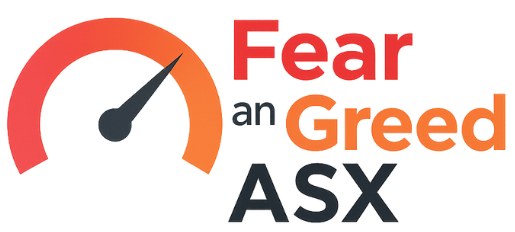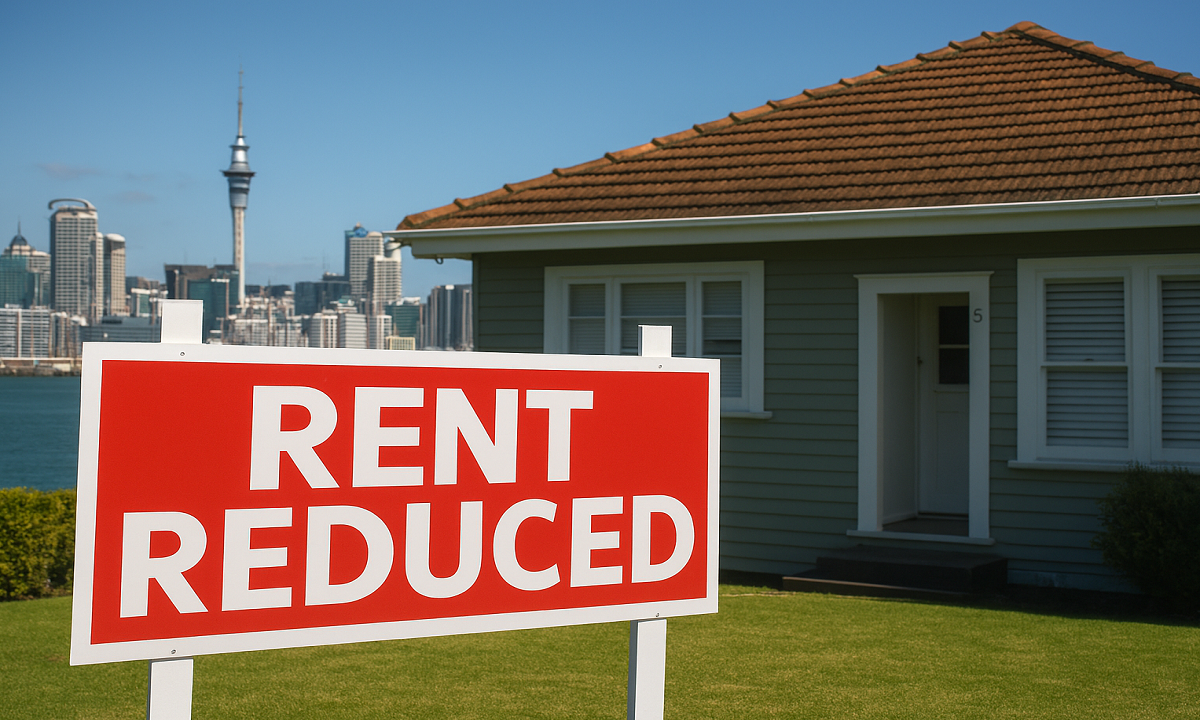We finished 2024 with a slightly soft reading, but we started with warm reading 2025. Now, my advice on December data fluctuations also applies to January data, though it is less than some other indicators. However, on average, December and January is probably the right point.
It still doesn’t look good even if you do.
Let’s start with changes in the market last month. You can tell from the table below that something has been revealed by the short expectations of inflation, such as the column on the left, though not as much as you can expect all concerns about revenue. (In this price, in this table you can ignore the massive increase in 1-year-old brakes-indeed there is no such animal, and the choice of bonds to use Bloomberg for 1 year can change a lot more. Focus on inflation conversion, which is a pure measure).

Today’s consensus was estimated at +0.30 % on the Core CPI and +0.29 % on the headline CPI. It represented the action on good inflation data we saw in December (the best basic inflation printed since July!), But it was expected that the effects of forest fire would be attributed to the One Office. In fact, the printed number at +0.47 % on the headline and +0.45 %, which is the worst after April 2023. These are the last 12 months.
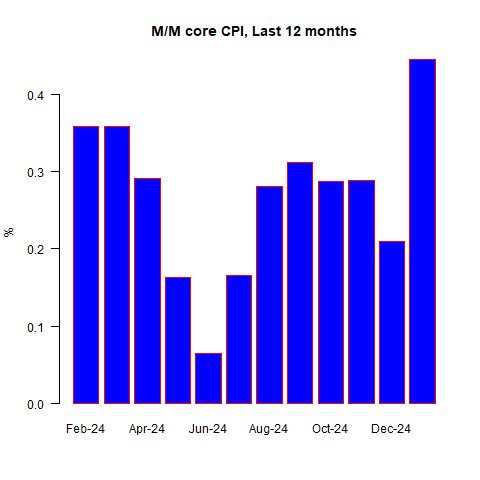
But we are surprised these days because we have seen high figures. Let’s return a little. Before Covid, we had not seen this high CPI number since 1992!
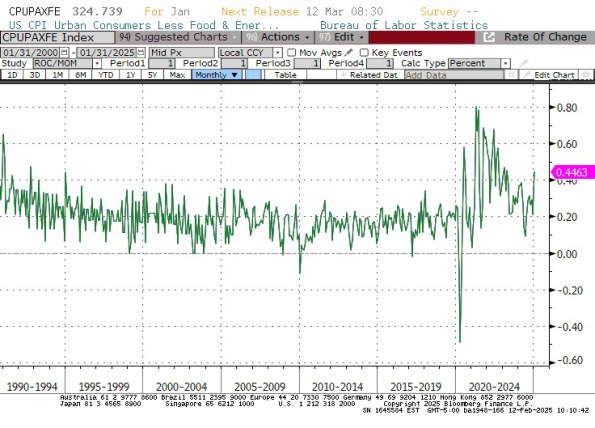
Okay, so some of them are once the means. And this is a January personality after all. Median CPI will be better. In my calculation it had about 0.3 0.35 %, but since the BLS has changed the weight of the New Year in this report, I am not less confident in my estimates. It should be closer. And since last January there was a large median print, it means that Y/Y median will fall 3.66 % or more on the median base effects. But certainly there is really no significant improvement here.
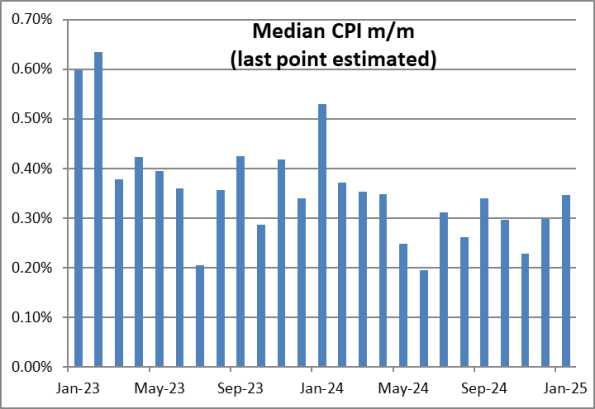
Talking about the weight of the CPI again: It always gives rise to conspiracy theories, though its weight is very transparent. And the changes are very few years. Here are changes with the weight of the last January.
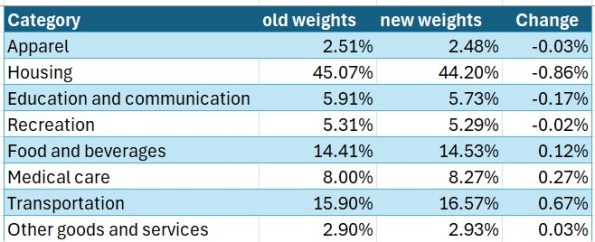
The BLS also announces the categories that are being dropped or added or changed. I never indicate them because it’s really boring. At least, this usually happens. This year, the BLS announced that the “pet food” series was named “pet food and behavior”. Because who is a good boy? Well, you are good boys.
Let’s look at some of the main criminals for this month’s upside down.
- Used cars SA +2.19 % m/m – we all expect some up to lift after jungle fire, but I’m not sure the reason is. New cars CPI only increase +0.04 %. But since 2023 used cars this is the highest m/m increase
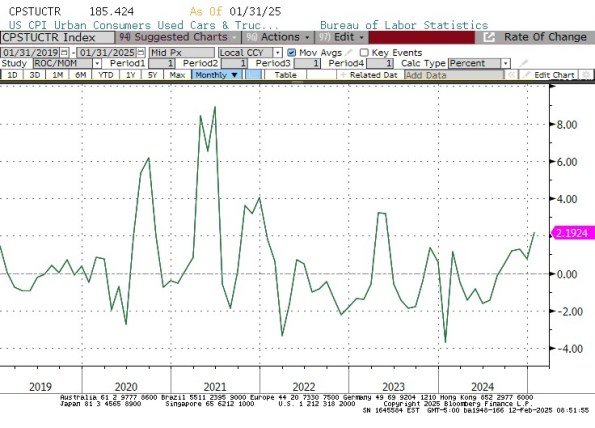
A major anxiety with used cars is the top of the overall price level. Remember that the growing spirits during the covid (thanks to the geyser of the geyser, which created very little and some new cars to buy American consumers) was a major bull and/or driver (speaking mathematics) to increase the CPI post. Non -dependent The rise in used cars was pushed to the inflation of basic goods, and the Core CPI was dragged down. But now it seems that used car prices are once again high. It takes a good time to mention that the M2 is also rising. The money supply is 40 % larger than the end of 2019. Used car prices are only 32 % higher. I think the deflation has ended in used cars. (I added M2 to this chart.)
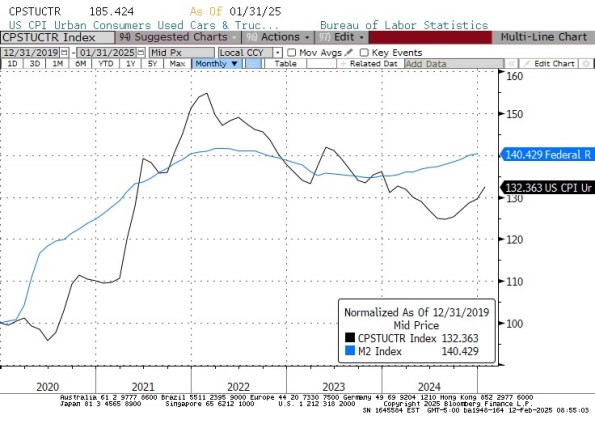
As a result, and despite being a costume -1.4 m/m/m (this is a place that can cut prices because we do not produce any costumes in the United States… On the other hand, there are many suppliers of apparel globally so that there is a blanket price, we will not see any major effect from the CPi -Y -0.10.). As I have noted before – advertising nausea, perhaps – to get inflation to 2 % you need inflation of core basic goods to stay negative, and very decent. Basic services decreased from 4.4 % Y/Y to 4.3 % Y/Y, but obviously if They The portion is more than 4 %, and it is the largest part, you need basic equipment to stay flaxid.
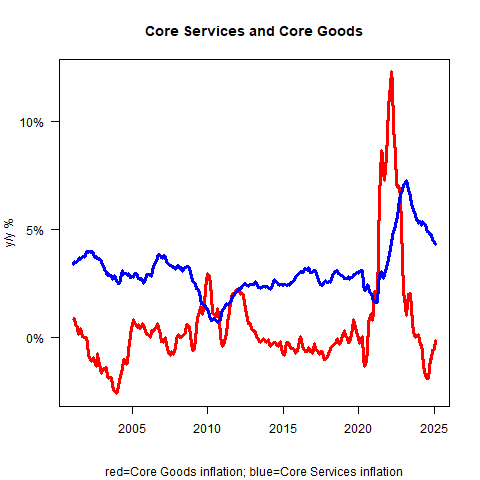
- Health insurance increases +0.74 % NSA. Health insurance inflation sometimes jumps in January, so this is not something I am worried about (besides, health insurance numbers are really calculated only once a year and ends throughout the year). But it’s worth considering.
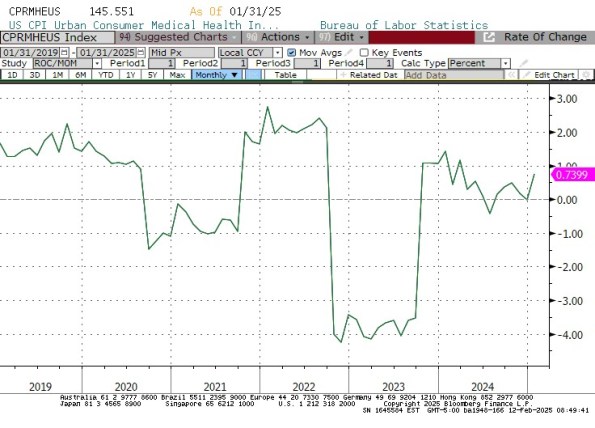
- Stay away from home, +1.43 % sa. Usually it is one of the types that jumps too much and this is the next month we will expect a reversal, but with forest fire in California I will expect it to be happy for a while, even if it is only the Western America affected. But do not forget that there are still many people in North Carolina without homes. On the other hand, if exiles increase more than that time, this is a place where prices can be overcome because many illegal foreigners are kept in hotels at the expense of the local/state/federal government. In my opinion, this disinfection effect is about months away.
- Pharma was a Huge Month, 1.4 % meter/MSA increase. This is the biggest monthly benefit of decades. I suspect some of this is because pharmaceutical companies know that they are on President Trump’s ‘X’ after actively acting against them in 2020. The president has been talking about how he is worried about US drug prices than drugs sold in other countries. This is a real threat – in my previous period, when it comes to pharmaceuticals, he talked about implementing a “most favorite nation” clause (I wrote about it). So this is the attack to me as much as possible that the pharmaceutical companies were partially raising prices in January to cut them with great theaters to show their ‘support’ to the president (and stop the most preferred country as long as possible). I do not expect to see this repeated next month, as long as the rates affect API (active pharmaceutical ingredients) in the near term.
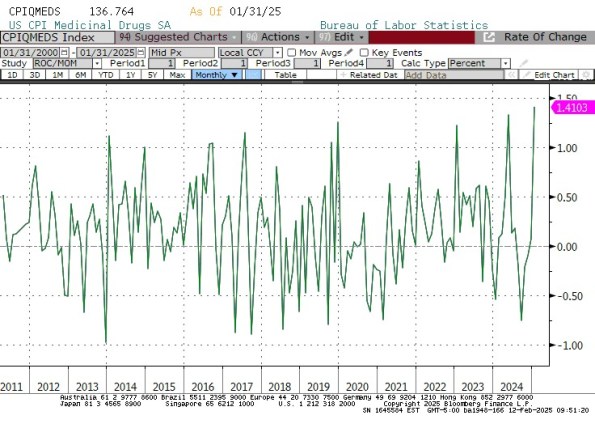
- Hospital services were also higher in +0.95 % meter/MSA, but it is less unusual for the series that jumps as much as living away from home. Still, it was the highest print since March.
Good side – while the primary accommodation fare was slightly higher than the previous month (+0.35 % vs +0.30 %), but the OER was the same (+0.31 %) and the fares continued to decrease overall. However, they are entering the falling rate. It seems like a dip that I expected is never going to happen, as the fare rate growth appears to be changing with our model in the highest 3s. And it doesn’t need to be repeated, but I will do anyway, that there is no sign of a widespread lack of rent.
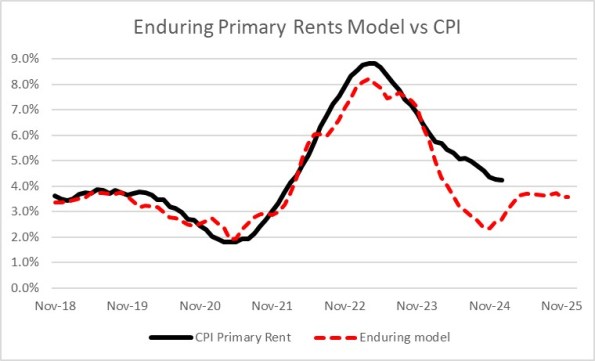
This month, food and energy were extra, though less than I expected. The house was +0.46 % meter/meter, and I expected it doubled. Eggs +13.8 % M/M (NSA), and +53 % were Y/Y, and a lot of presses are getting. But this is not an inflation thing, it is a lack of chicken and the prices of eggs will eventually come down (almost, which requires a chicken to go to youth in time). Food from home was relatively Comped at +0.24 %.
So what is a big picture?
What we saw today was mostly a trend. I keep thinking that the new ‘middle’ high 3 % s on Median CPI, has a low 4 % area, which is occasionally spread up and below the surface. During 2025, since revenue is implemented, we are likely to see a slightly higher runs. The revenue is once, and it does not have a major effect until all imports are applied to the blanket. Remember (and review my recent blog and podcasts on this topic) that despite some hyper ventilating Congress people, consumers usually do not pay the majority of tariffs except that in tight conditions where the demand for good toe from this particular supplier is unstable. If the Trump administration imposes a 20 -off blanket on all imports, without exception, it can cause 0.5 % -1.0 % inflation. But this is the effect of one -time (level) as long as the revenue is increased, and its effect is reduced as tariffs (1000 tear tariff prices will not increase more than 900 tare tariffs, because we are not importing anything at this time). Therefore, equal to all, we should expect inflation slightly more than expected in 2025, and maybe for the first part of 2026, but then the tariff effect will end and inflation levels in which we will be settled will once again be driven by money growth.
The news on this score is not good, M2 is increasing 5.8 percent annual rate during the last quarter and 3.9 percent over the previous year. 4 % will bring us to 1.5 % -2 % inflation in the long run, maybe; 6 % will insert us to height 3s, less 4s. Some people think that if inflation ends slightly, the feed can once again increase interest rates. But the monetary policy has little control over inflation, which is caused by revenue and therefore it will not mean to be reversed. It only shows how bad the box is that the Fed in the middle of the previous year made itself a bare political ease. There is no economic justification for strictness due to prices. It will look barely political once again. I would be surprised if the rates here were higher overnight. Of course, I would also be surprised to see them diminishing, especially since the Tare of Domestic Economic Growth is also good.
So there will be a lot of economic volatility from here, but it seems that the Stissus is 3S, the less 4s. Even then
Original post
